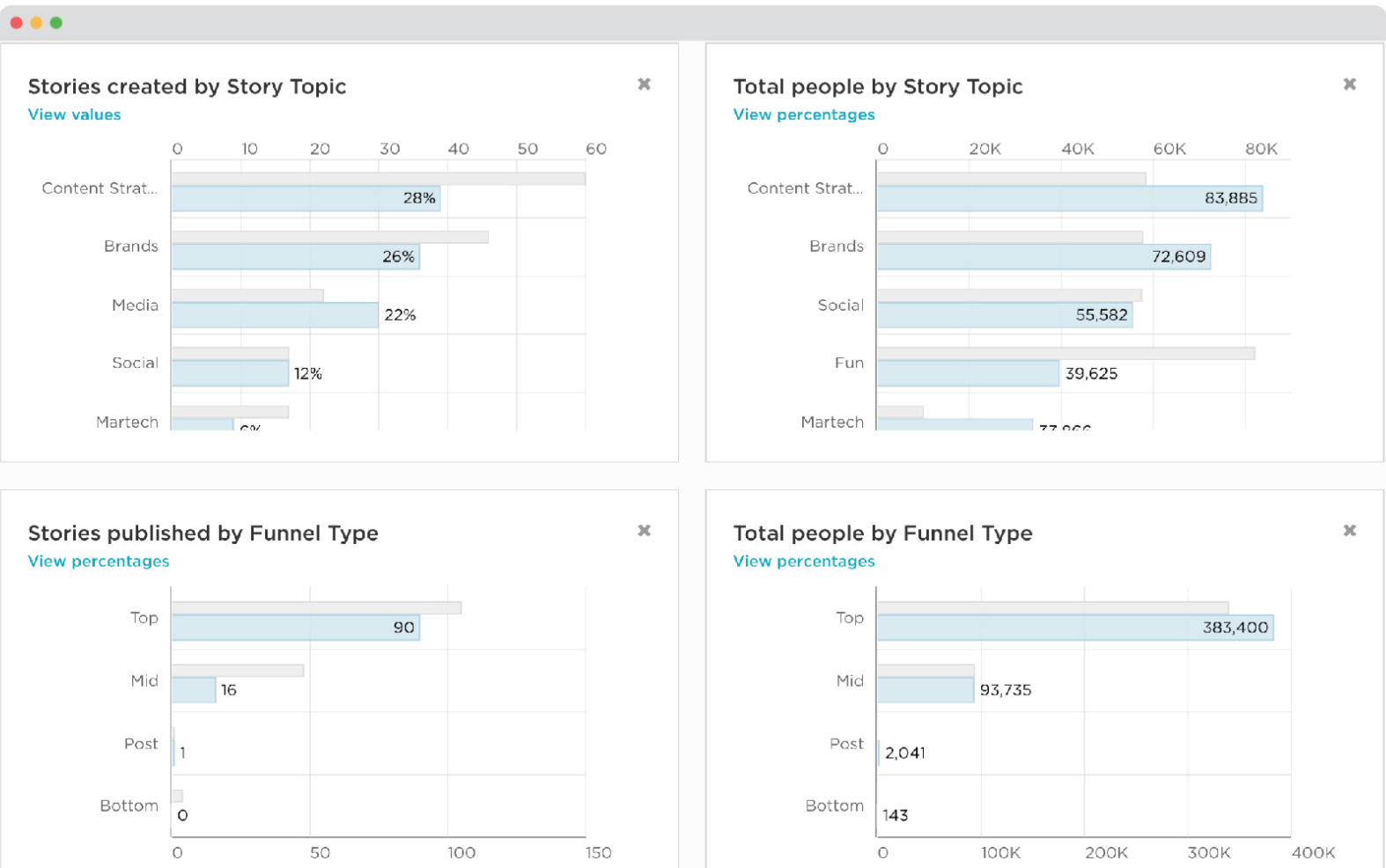ROI
Production vs. Performance Metrics: The Key to ‘Moneyball’-Style Content Planning
This story is part of Contently’s Accountable Content Series, a collection of articles, webinars, case studies, and events we’ve designed to help marketers deliver measurable brand impact and business outcomes with content. To see more content in this series, click here.
Yesterday kicked off my favorite event of the year. No, I’m not talking about SXSW Interactive, the annual tech festival where I attempt to turn myself into a beer-soaked taco. I’m talking about NFL free agency.
This year, the Moneyball approach to team-building has finally made its way to the NFL, and I’ve spent the past two days texting fellow data/football geeks at Contently with the advanced stat metrics for key signings. Advanced stats aim to tell you how good a player really is by going beyond the “vanity” stats like yards or touchdowns.
For instance, Player A might have 1,000 receiving yards simply because his quarterback threw the ball his way 150 times, while Player B had 800 yards, but accomplished that with only 75 targets. If you only looked at yardage, you’d think Player A was better than Player B, but in fact, Player B is far superior because he’s much more efficient. If your team is looking for a new wide receiver, you want to sign Player B and throw him the ball more.
And if you suspect I’m about to tell you that content marketers can learn a lot from this approach, well, you’re absolutely right.
According to a TrackMaven study, branded content production is up 35 percent, but engagement is down 17 percent. Some would say this is a sign that content marketing is getting less effective. But I’d make a different argument: A lot of marketers don’t do a very good job of evaluating their content and doubling down on what is effective.

Content planning for efficiency
As Contently’s director of content strategy, I talk to a lot of people eager to invest in content marketing. They’re often so eager that they want to plan their content for an entire year. This instinct comes from a good place, but it’s often a big mistake.
Instead, I advocate for them to plan three months worth of content based on comprehensive research on their audience’s needs and a white-space analysis of where content can make the biggest impact. Then, marketers can set themselves up for continuous success.
The first step is to tag your content by key attributes. This tactic lets you evaluate how different types of content perform. These are the seven we currently use on The Content Strategist:
- Content pillar
- Story format (article, infographic, video, etc.)
- Funnel type (top, mid, lower)
- Target vertical (finance, insurance, tech, etc.)
- Target region (U.S., Europe)
- Month/year
- Column (we organize our calendar through a dozen different content columns)
It helps to have a content marketing platform like Contently where you can add these tags in seconds when you create a new story. But it’s also possible to add them to a CSV of analytics data in Excel. Next, you want to sort your data using tags to compare production metrics to performance metrics. That way, you can see which stories are under- or over-performing against various KPIs.
Here’s an example from the Contently Analytics dashboard.

In this case, I’m using Contently’s analytics cards to compare production metrics and performance metrics side by side. In this screenshot from last year, I was able to see a few clear trends: Stories on the media underperformed (we’ve since cut those articles), martech stories performed well despite constituting only 6 percent of our content mix (they’ve since become a staple), and “content strategy” is our bread and butter (I know, shocking).
This approach with tags allows you to see which types of content drive results for your business and evaluate the tactics you should abandon. Comparing production and performance metrics closely is also key because you always want to track what’s generating the best results on a story-by-story basis.
The goal in content marketing and football is the same: You don’t want to waste money, you don’t want to waste time, and you really hope that no one gets a concussion today at work. Now if you’d just go ahead and share this story—or even click on one of the links above and buy some legitimately awesome content marketing software—it’d really help me hit the performance-based bonuses in my contract.
Get better at your job right now.
Read our monthly newsletter to master content marketing. It’s made for marketers, creators, and everyone in between.




